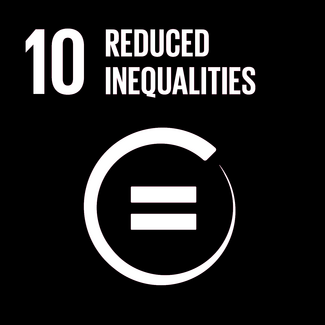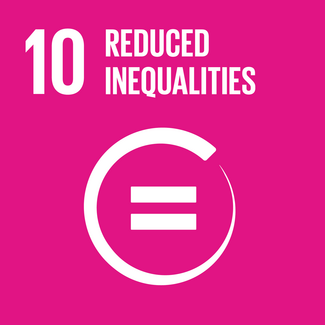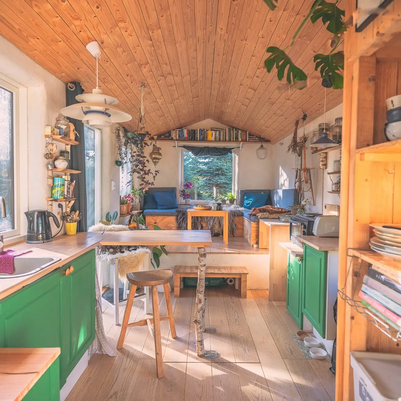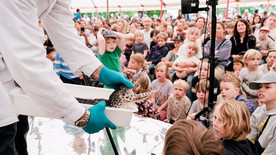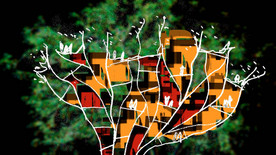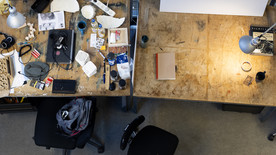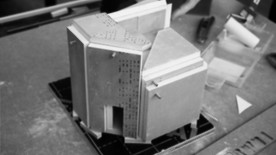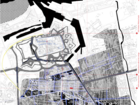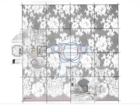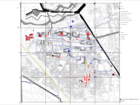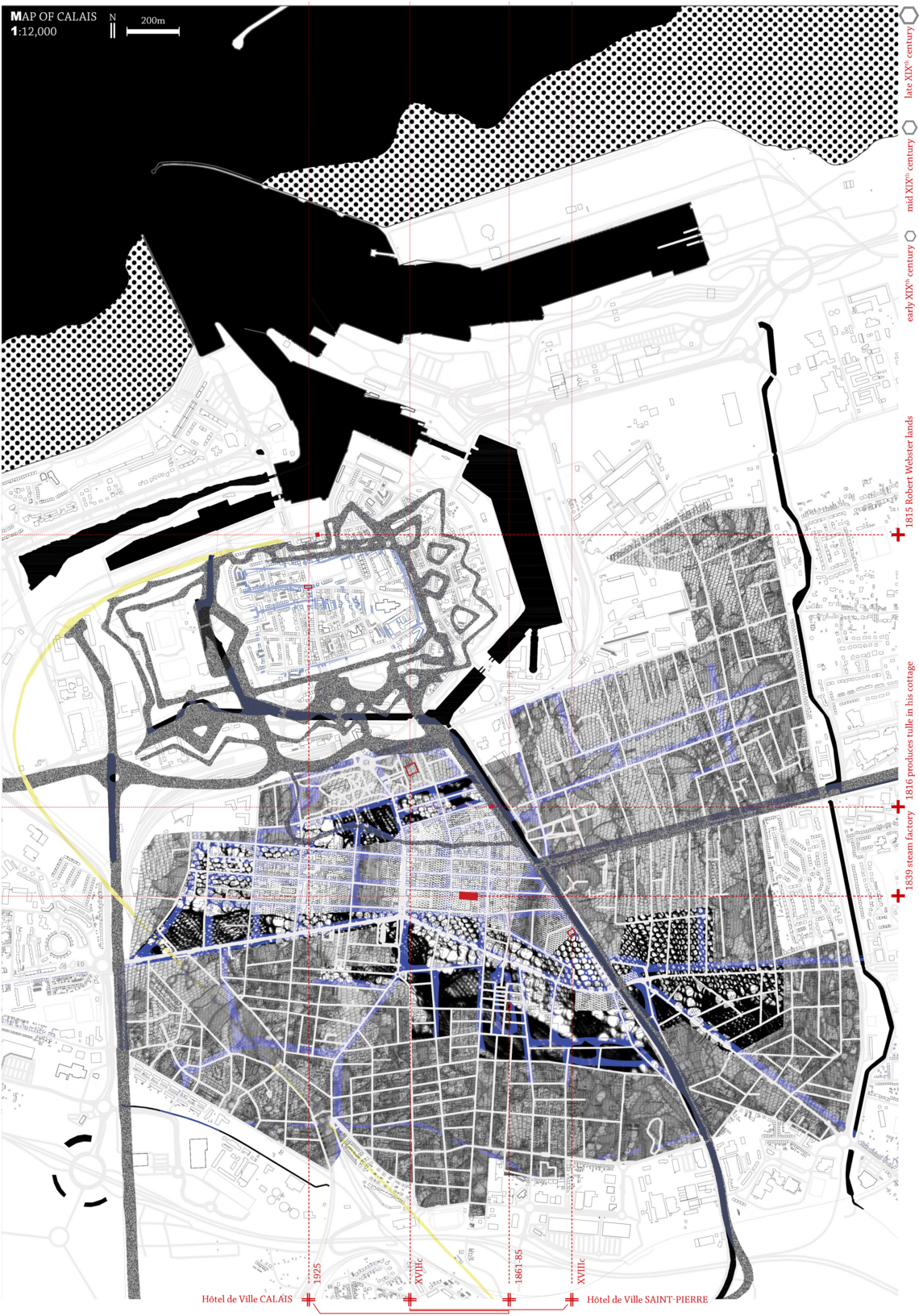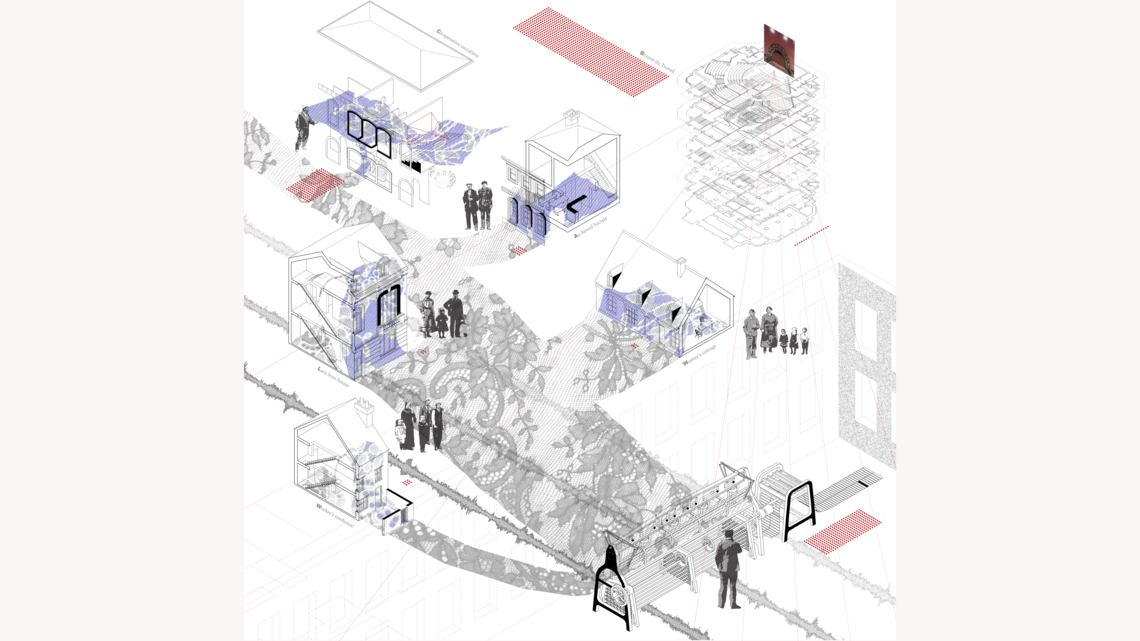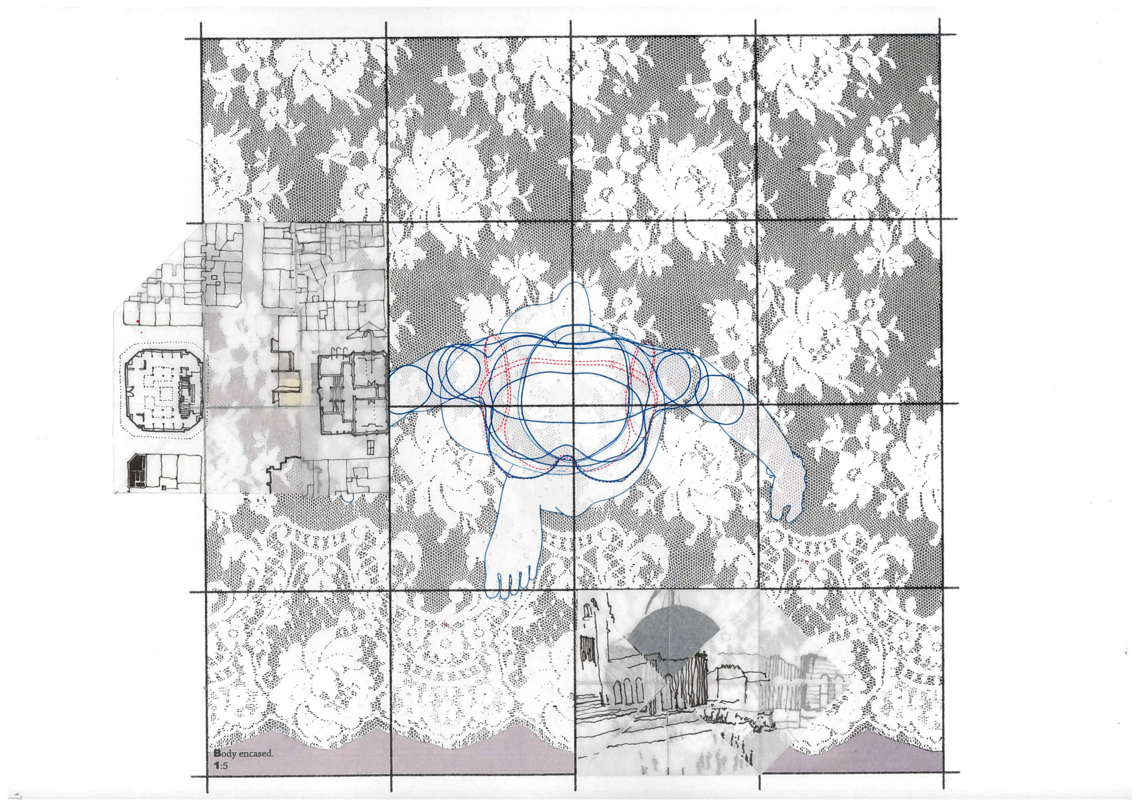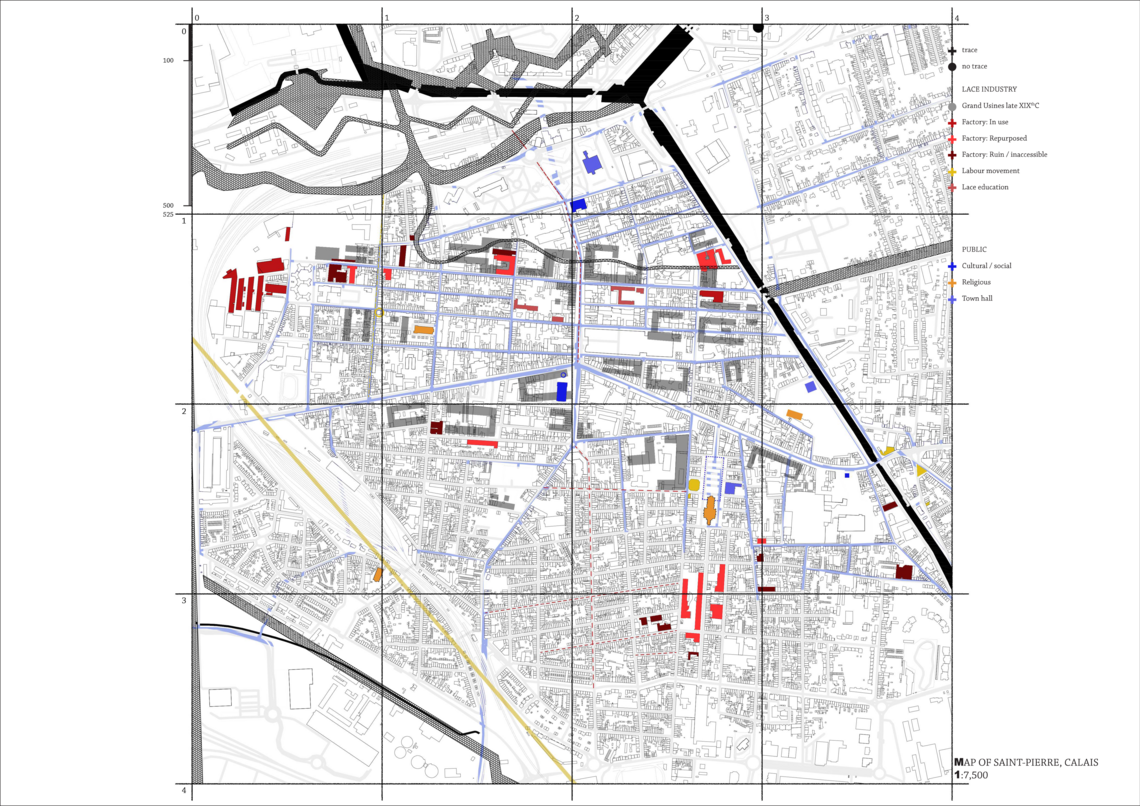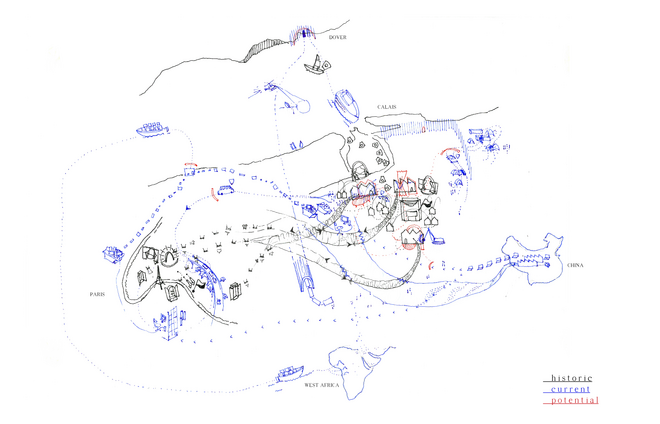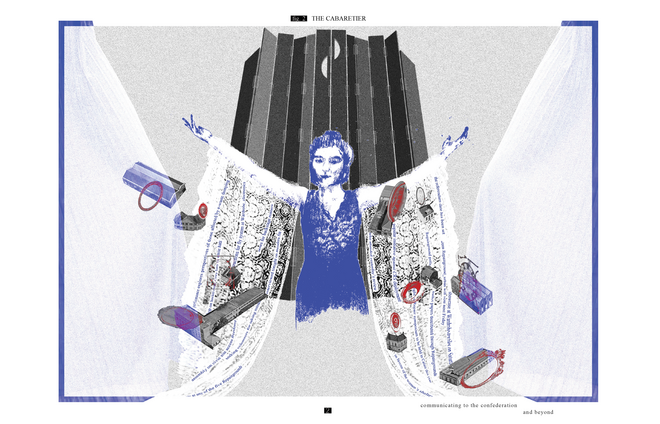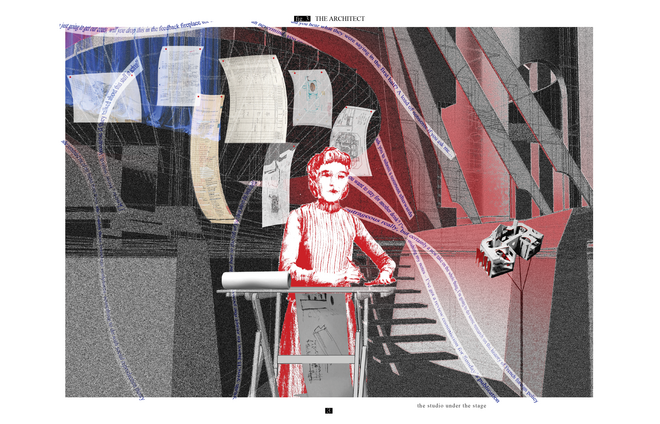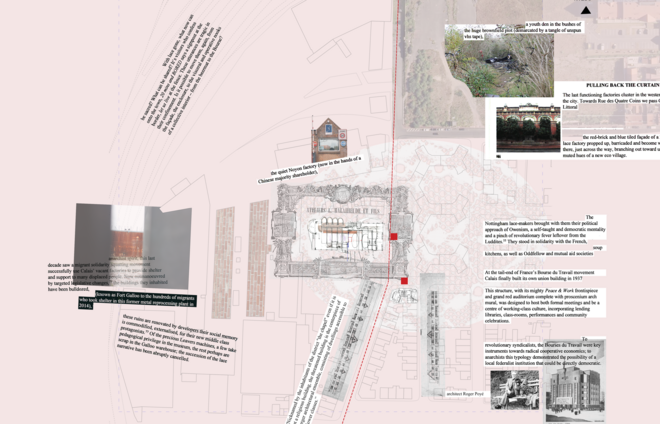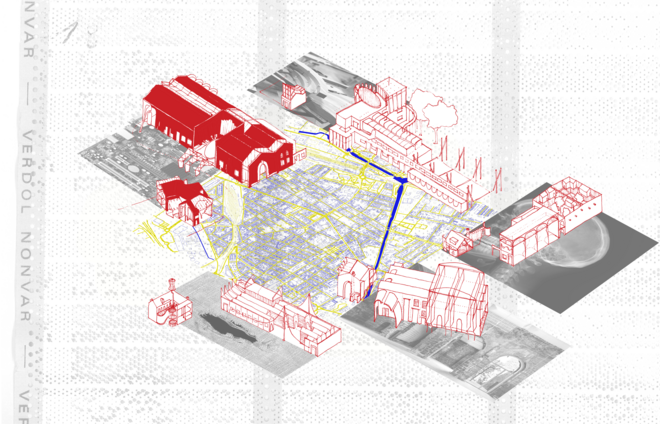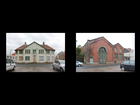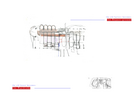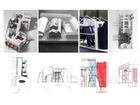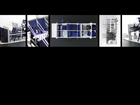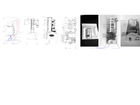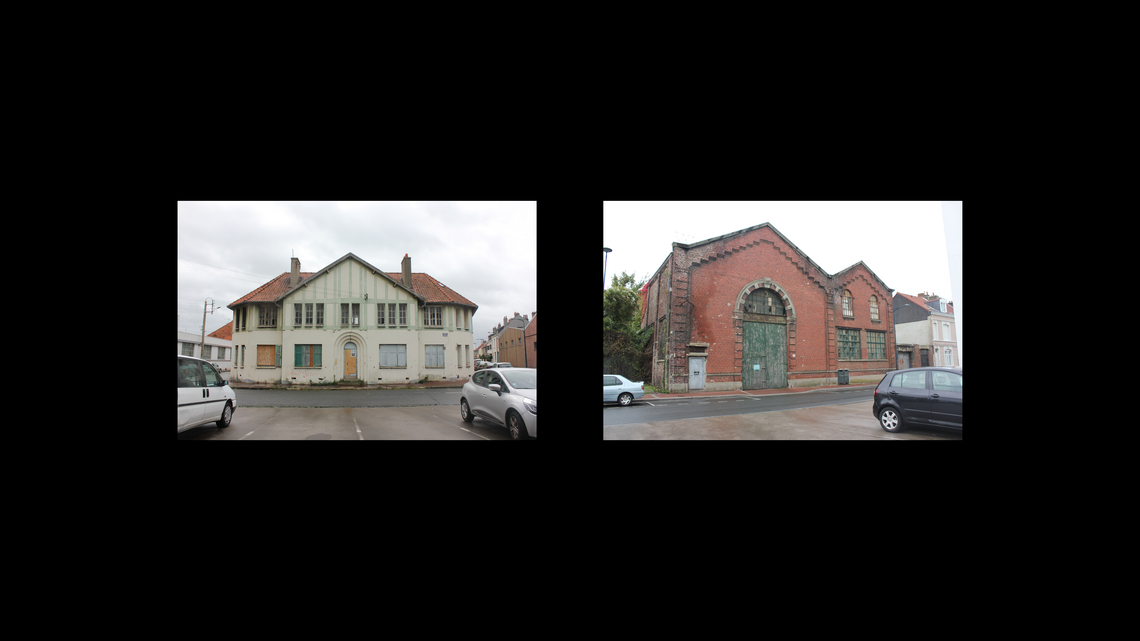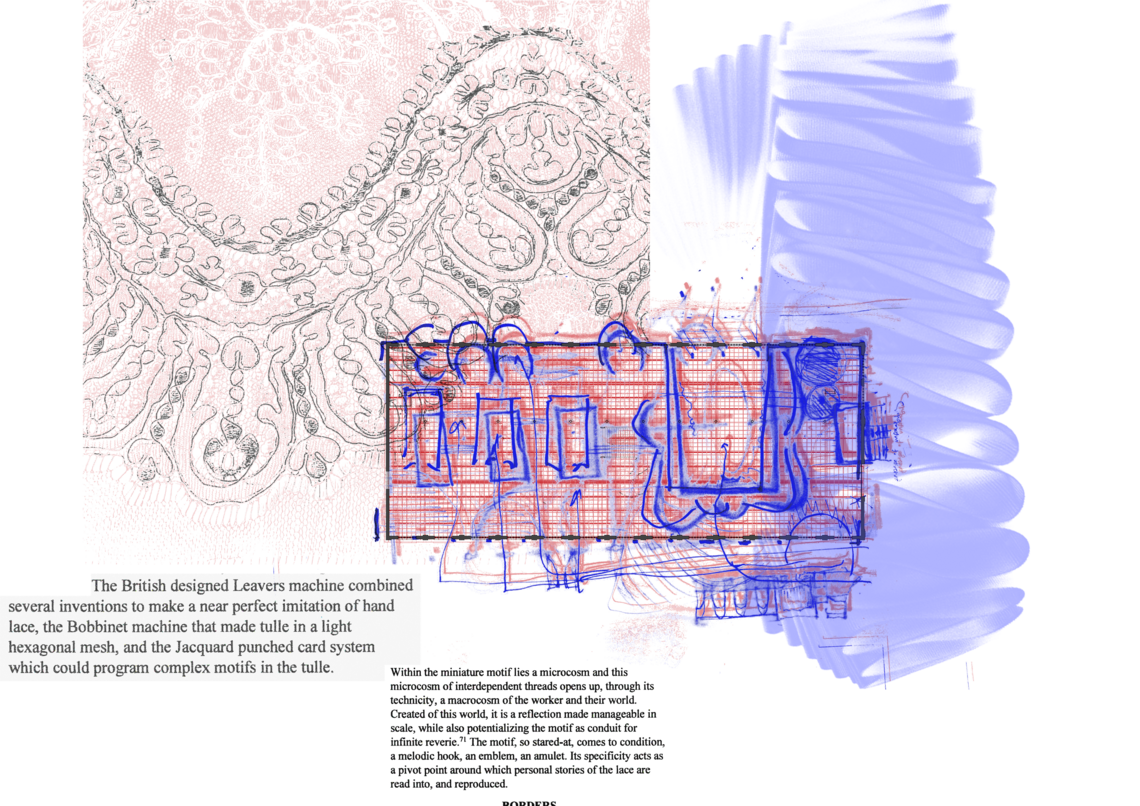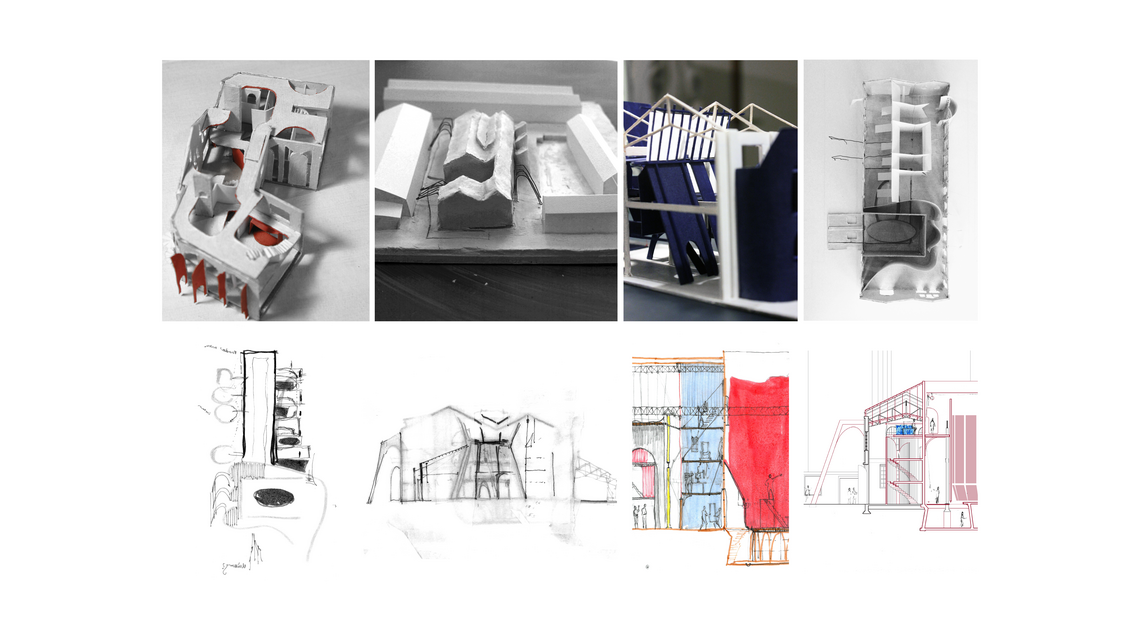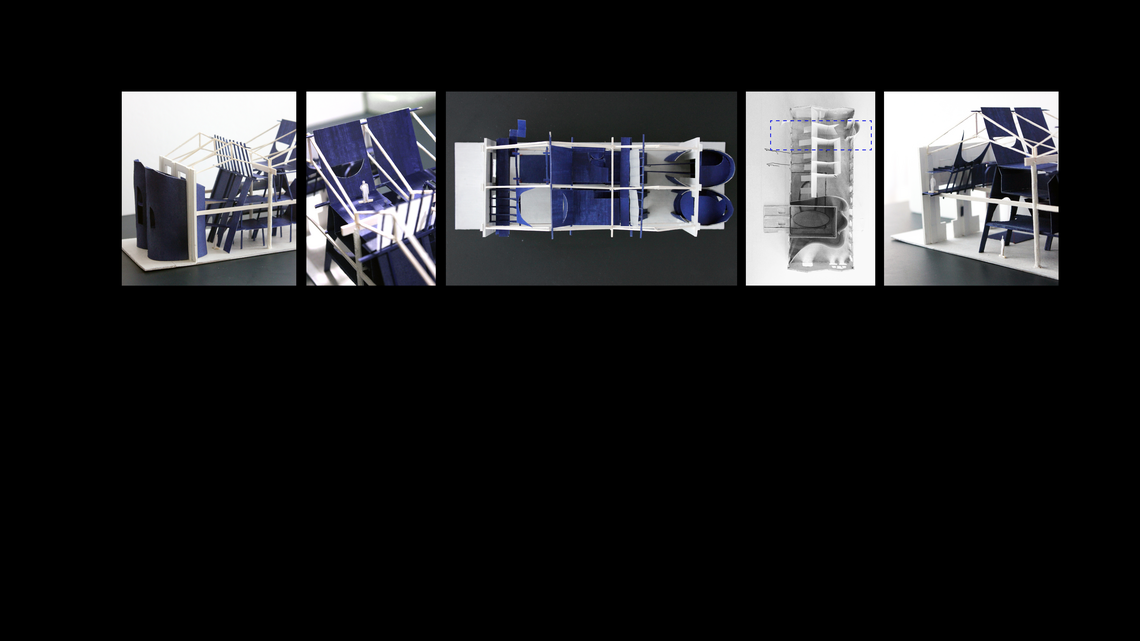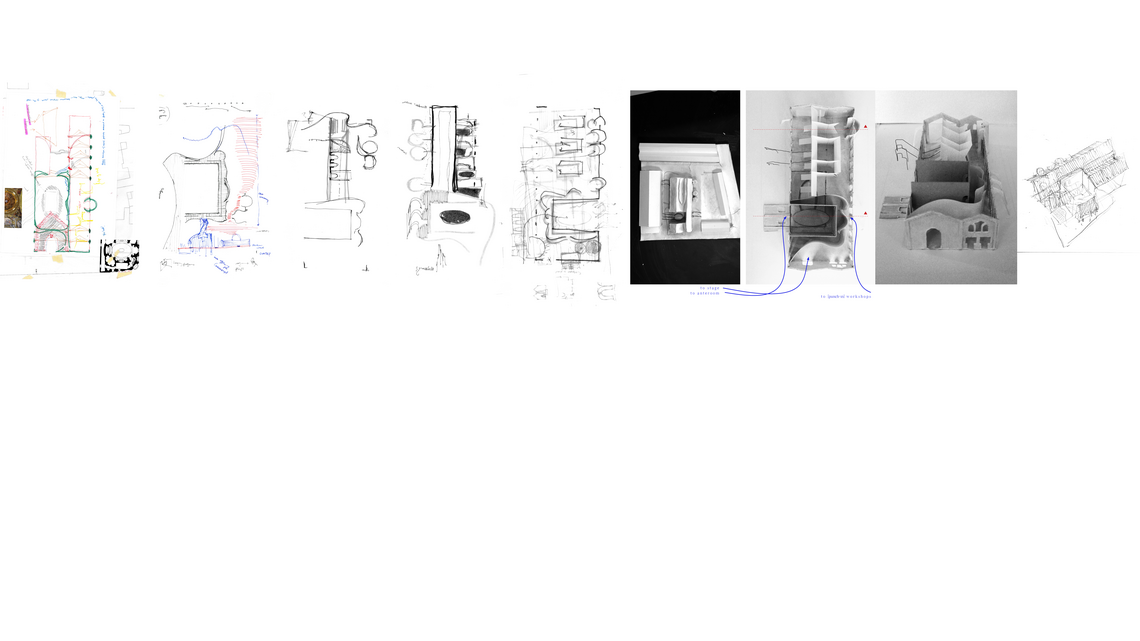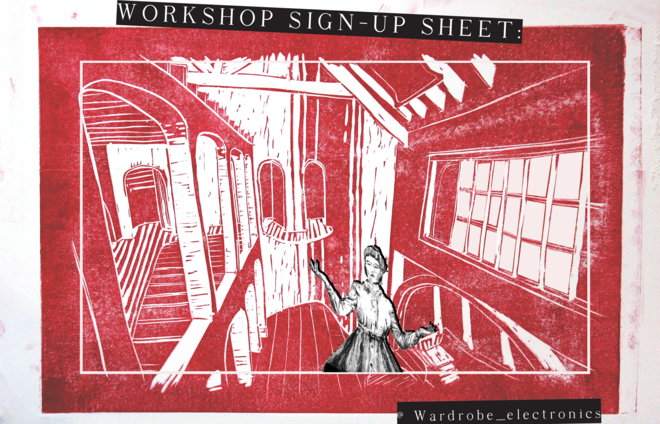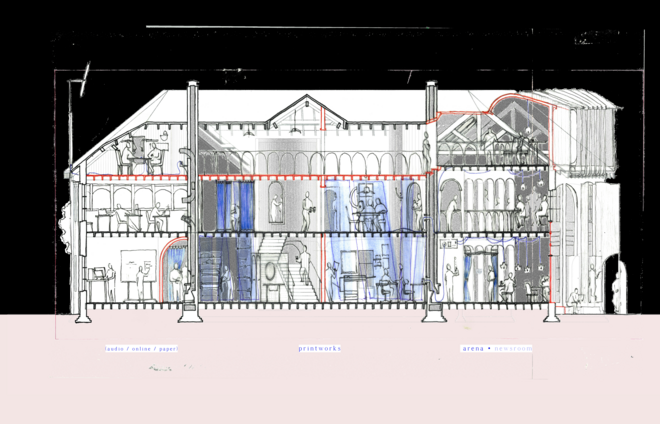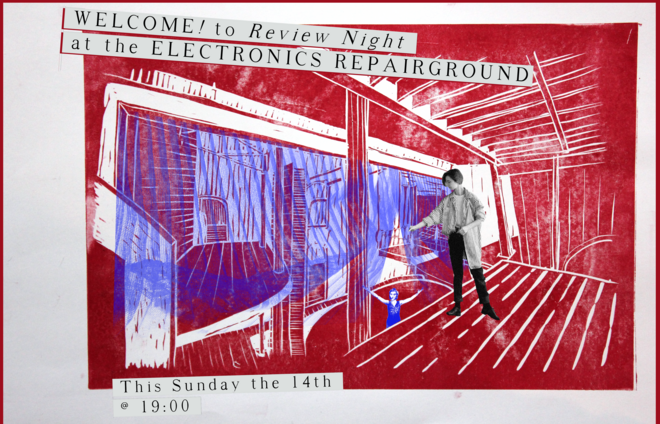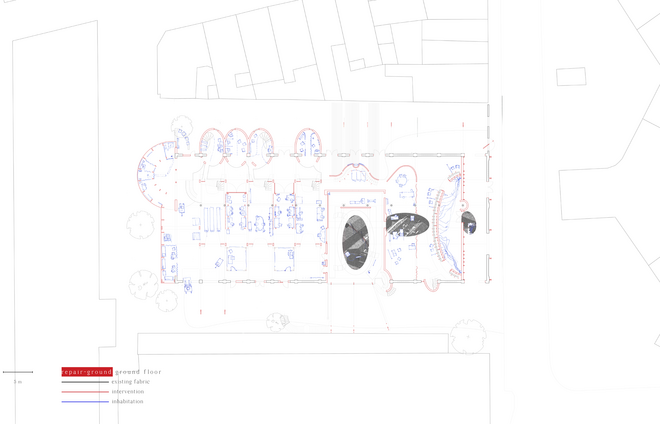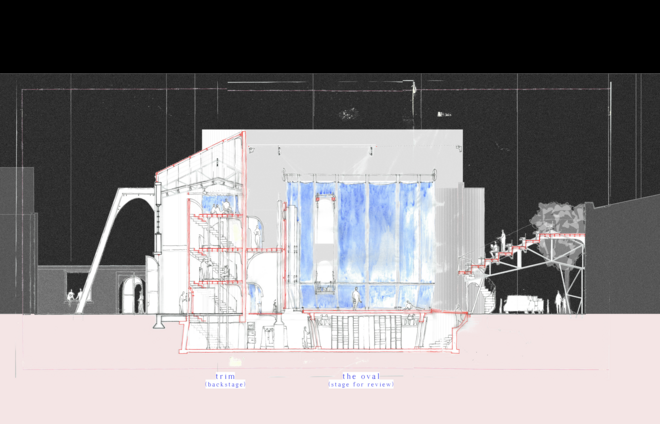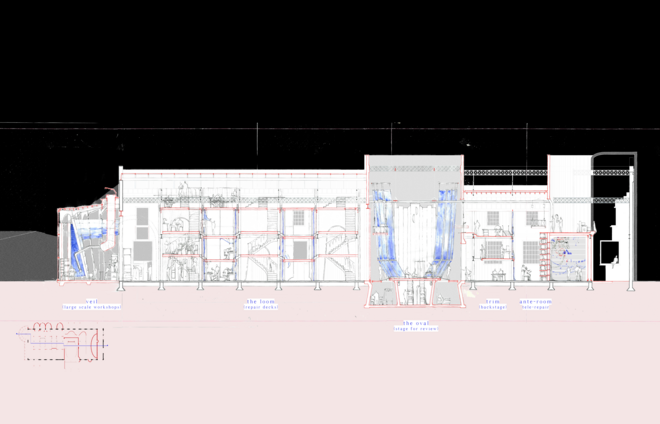
The Radical Raccommodeuse
This project reimagines Calais as a confederation of ‘Repairgrounds,’ buildings that potentialize social change, and possible system change. This new community is styled after the Raccommodeuses, the repair-women of the city’s once prosperous lace industry. Repair is an imperative to act, together, to rebuild empathy and solidarity, and empower the people in the politics of their city in crisis.
Architectural disposition and facility can encourage a new form of community for Calais. For around 150 years the city's social and political cohesion was programmed by its prosperous lace production via a constellation of ideologies, actions, concerns, relations and inhabitings. This lineage is traced and intercepted, making use of the existing cultural and built landscapes as resources in the new project of repair.
![Objects to icons: an abbreviated timeline of p[lace] translation as semiotic study. 1815-1940, Calais.](/sites/default/files/styles/medium_wide/public/imported-file/section-images/ila_3_dec-jan_drawings2_0.png?itok=oKTV9XXS)
The imagined characters of the Radical Raccommodeuse (mender), the Cabaretier (performer) and the Architect (designer) are flexible roles open to anyone involved in the Calais repair community. The Raccommodeuse embodies repair and education, which the Cabaretier communicates and provokes a discussion which the Architect responds to and designs from, these designs are acts of community repair which the Raccommodeuse attends to, and so the loop goes around.
Addressing the urban environment, we move from a historic understanding of the city as a machine park, built to house the huge, noisy lace looms, to the city as network for repair-work.
Five sites are chosen in Saint-Pierre, consisting of an empty lace-era house and factory in close proximity and symbiosis. The factory is reimagined as a Repair-ground consisting of workshops and classrooms for investigation and speculation, while the house is reimagined under the name the Wardrobe as site of review and outwards communication.
In these Repairgrounds, the community learns to mend, re-make or reimagine, also to engage in politics of repair: organising, resisting, speculating, as well as representing and communicating throughout these processes.
Akin to the organisation of the trade union congresses, the Repairgrounds form a confederation, autonomous in their domain of repair but in close alliance with each other.
Alongside repair, the notion of cabaret plays a central role. In Calais, the turn-of-the-century cabarets are remembered from the lace-worker’s struggle as places to meet, laugh, vent, and share ideology and strategy. The Parisian cabarets artistique were vessels for fierce social and political satire across the social strata, an underbelly renown for provocation and parody.
To enter the cabaret was to subject oneself to critique, as well as participate in the critique of others. In the cabaret, dissensus was expressed through dialogue between audience and performer. The response of those watching was the other half of the conversation, so the show should never be didactic.
This project takes on the architect’s role, imagining what one iteration of the community’s architecture could be, guided by the agonistic nature of a cabaret conduct, as well as its repair practices and ambitions.
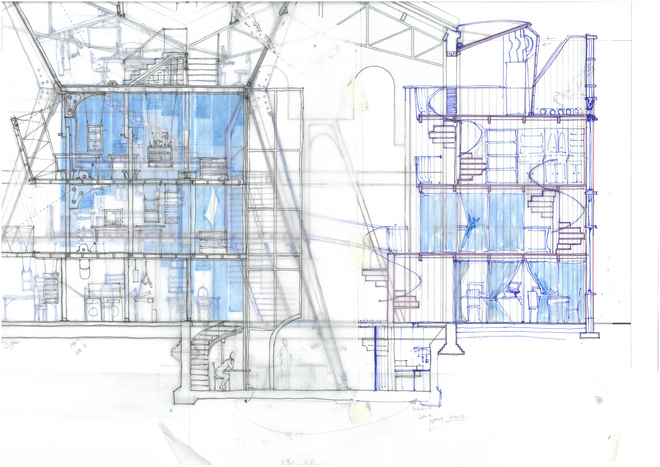
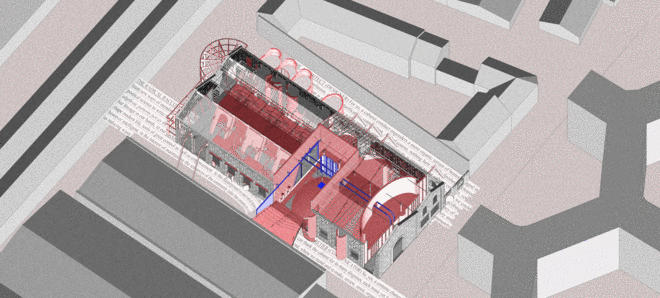
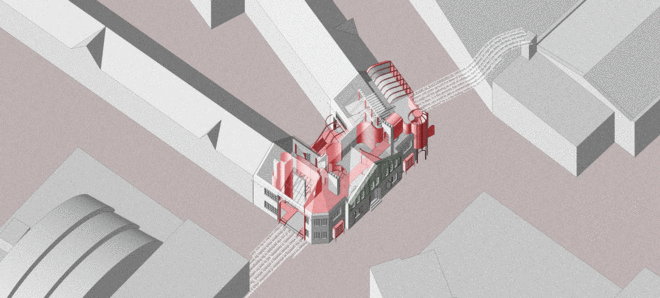
Project programme
Welcome to the Repairground
Anarchy and Old Lace: essay
Det Kongelige Akademi understøtter FN’s verdensmål
Siden 2017 har Det Kongelige Akademi arbejdet med FN’s verdensmål. Det afspejler sig i forskning, undervisning og afgangsprojekter. Dette projekt har forholdt sig til følgende FN-mål